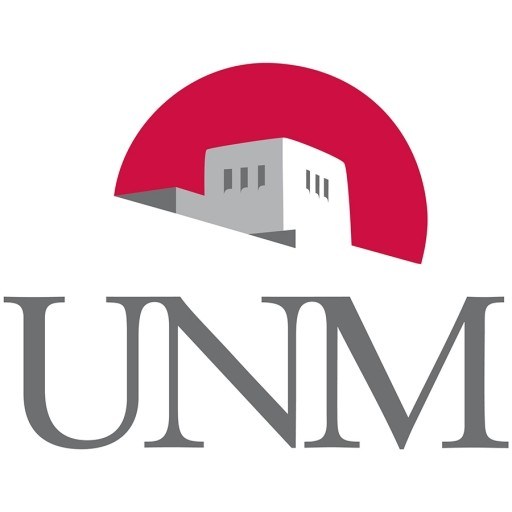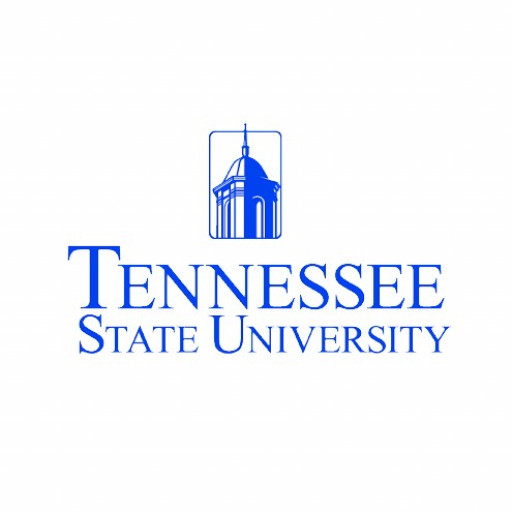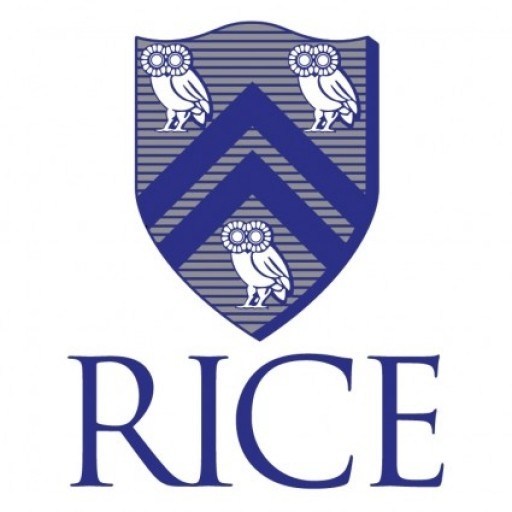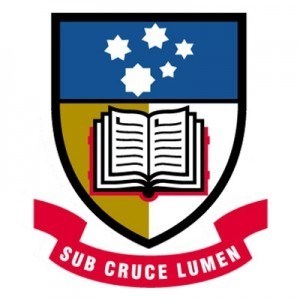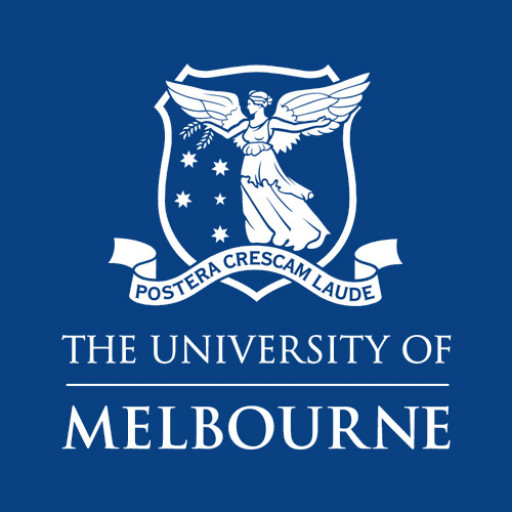Photos of university / #uofnm
Earth and Planetary Sciences at the University of New Mexico offers a comprehensive education in understanding the physical, chemical, and geological processes that shape our planet and other planetary bodies. Our program provides students with a strong foundation in fundamental sciences such as geology, geophysics, geochemistry, and atmospheric sciences, combined with hands-on research opportunities and fieldwork experiences. Students will explore topics including Earth structure, tectonics, volcanology, mineralogy, paleontology, climate science, and planetary geology, preparing them for diverse careers in research, environmental consultancy, resource exploration, and education. The curriculum emphasizes integrating theoretical knowledge with practical skills, including data analysis, laboratory techniques, and remote sensing technologies. Our faculty are actively engaged in cutting-edge research, contributing to advancements in understanding Earth's history, dynamic processes, and planetary systems. The program promotes critical thinking, problem-solving abilities, and scientific communication essential for addressing global challenges such as climate change, natural hazards, and sustainable resource management. Students have access to state-of-the-art laboratories and geological field sites across New Mexico and beyond, fostering experiential learning. The program is designed for students aiming to pursue careers in academia, industry, or government agencies involved in earth sciences. Graduates will be well-equipped to pursue further graduate studies or enter the workforce with a solid foundation in earth and planetary sciences, enabling them to make meaningful contributions to scientific knowledge and societal well-being.
YEAR 1:
SEMESTER I:
- End of first week turn in interview results and any petitions to Graduate Committee Chair.
- End of semester (prior to finals week) select three thesis committee members [notify examiners and Office Personnel by end of finals week]. Write a memo indicating these choices to the Department Chairperson and request assignment of additional examination member. Schedule full thesis committee meeting prior to end of semester to discuss thesis topic.
- End of semester (prior to finals week) complete Department Program of Study Form, (appendices III) which must be signed by all three thesis committee members, and submit to Graduate Committee for approval.
SEMESTER II:
- Prior to last three weeks of second semester - take M.S. examination and defend thesis proposal/research.
YEAR 2:
SEMESTER I:
- By end of second week complete Universities Office of Graduate Studies “Program of Studies for the Master’s Degree” form and submit through your advisor to the Graduate Committee Chairperson. (web-site http://www.unm.edu/~grad/forms/forms.html)
SEMESTER II:
- In order to complete and defend thesis this semester:
- Comply with Master’s Thesis/Graduation Checklist
- By August 1, for Fall, December 1, for Spring, or May 1, for Summer, the student must inform Department in writing of intention to complete all degree requirements during that semester
- Three weeks before thesis defense date arrange with department and Office of Graduate Studies scheduling of exam and place. Two weeks before defense date: Provide copy of thesis in main office for faculty examination.
- Turning in Your Electronic Thesis – IMPORTANT: A Plan I Master’s student must submit his/her thesis to OGS within (90) ninety days of his/her final thesis defense or by the specific graduation term degree requirement deadline (November 15, April 15, or July 15, respectively) whichever comes first. Please refer to the OGS Website –Thesis/Dissertation information for format guidelines and the procedures for the electronic submission option to satisfy the program degree requirement. When your thesis manuscript has all revisions completed and approved by your thesis committee, the procedures to submit electronically the manuscript should be completed. Each Master’s student will be required to submit electronically their thesis ONLY at the DSpace digital repository-UNM. All paper forms listed must be submitted to the Office of Graduate Studies or the electronic manuscript will not be accepted for final electronic thesis submission
Courses
- ENVS 101. The Blue Planet. (3)
- ENVS 102L. The Blue Planet Laboratory. (1)
- ENVS 315. Statistics and Data Analysis. (3)
- ENVS 320L. Environmental Systems. (4)
- ENVS 321L. Earth Materials and Critical Zone Geology. (4)
- ENVS 322L. Life and the Earth System . (4)
- ENVS 323L. Water in the Earth System. (4)
- ENVS 324. Earth's Climatic Environment. (3)
- ENVS 330. Environmental Systems. (3)
- ENVS 430L / 530L [430 / 530]. Advanced Environmental Science. (4)
- ENVS 530L / 430L [530 / 430]. Advanced Environmental Science. (4)
- EPS 101. How the Earth Works - An Introduction to Geology. (3)
- EPS 105L. Physical Geology Laboratory. (1)
- EPS 110. Topics in the Earth Sciences. (1-3 to a maximum of 3 Δ)
- EPS 115. Geological Disasters. (3)
- EPS 201L. Earth History. (4)
- EPS 203. Energy and the Environment. (3)
- EPS 225. Oceanography. (3)
- EPS 250. Geology of New Mexico. (3)
- EPS 251. Meteorology. (3)
- EPS 252. Volcanoes!. (3)
- EPS **300. Topics in Geology. (1-4, may be repeated once Δ)
- EPS **301. Mineralogy/Earth and Planetary Materials. (3)
- EPS **302L. Mineralogy Laboratory. (2)
- EPS **303L. Igneous and Metamorphic Petrology. (4)
- EPS **304L. Sedimentology and Stratigraphy. (4)
- EPS **307L. Structural Geology. (4)
- EPS 310L. New Mexico Field Geology. (4)
- EPS **319L. Introductory Field Geology. (4)
- EPS **333. Environmental Geology. (3)
- EPS 352. Global Climate Change. (3)
- EPS **365. Exploring the Solar System. (3)
- EPS *400. Topics in Earth and Planetary Sciences. (1-4, may be repeated once Δ)
- EPS 401 / 501. Colloquium. (1 to a maximum of 3 Δ)
- EPS 405L / 505L. Stable Isotope Geochemistry. (3)
- EPS 410 / 510. Fundamentals of Geochemistry. (3)
- EPS *411L. Invertebrate Paleontology. (4)
- EPS 415 / 515. Geochemistry of Natural Waters. (3)
- EPS 420L / 520L. Topics in Advanced Field Geology. (2-4 to a maximum of 8 Δ)
- EPS 427 / 527. Geophysics. (3)
- EPS 428 / 528. Applied Mathematics for Earth and Environmental Sciences. (3)
- EPS 433. Statistics and Data Analysis in Earth Science. (3)
- EPS 436 / 536. Climate Dynamics. (3)
- EPS *439. Paleoclimatology. (3)
- EPS 443 / 543. Aquifers and Reservoirs. (3)
- EPS 445 / 545. Topics in Sedimentology and Stratigraphy. (1-4, may be repeated 5 times Δ)
- EPS 450L / 550L. Volcanology. (4)
- EPS 455L / 555L. Computational and GIS Applications in Geomorphology. (3)
- EPS 457L / 557L. Mathematical Modeling in the Geosciences. (3)
- EPS 462 / 562. Hydrogeology. (3)
- EPS 465 / 565. Mars Evolution. (3)
- EPS 476 / 576. Physical Hydrology. (3)
- EPS 481L / 581L. Geomorphology and Surficial Geology. (4)
- EPS 482L / 582L. Geoarchaeology. (3)
- EPS 485L / 585L. Soil Stratigraphy and Morphology. (3)
- EPS *490. Geologic Presentation. (1)
- EPS 491-492. Problems. (1-3, 1-3)
- EPS 493. Independent Study. (3)
- EPS 495. Senior Thesis. (3)
- EPS 501 / 401. Colloquium. (1 to a maximum of 3 Δ)
- EPS 505L / 405L. Stable Isotope Geochemistry. (3)
- EPS 507L. Thermodynamics and Physical Foundations of Geochemistry. (4)
- EPS 510 / 410. Fundamentals of Geochemistry. (3)
- EPS 513. Planetary Materials and the Evolution of the Solar System. (3)
- EPS 515 / 415. Geochemistry of Natural Waters. (3)
- EPS 516. Selected Topics in Geomorphology. (3, may be repeated 5 times Δ)
- EPS 518L. Electron Microprobe Analysis. (3)
- EPS 520L / 420L. Topics in Advanced Field Geology. (2-4 to a maximum of 8 Δ)
- EPS 522. Selected Topics in Geophysics. (3, may be repeated 5 times Δ)
- EPS 523. Topics in Tectonics. (3, may be repeated 5 times Δ)
- EPS 527 / 427. Geophysics. (3)
- EPS 528 / 428. Applied Mathematics for Earth and Environmental Sciences. (3)
- EPS 534. Radiogenic Isotope Geochemistry. (3)
- EPS 535. Freshwater Ecosystems. (3)
- EPS 536 / 436. Climate Dynamics. (3)
- EPS 538L. Analytical Electron Microscopy. (3)
- EPS 543 / 443. Aquifers and Reservoirs. (3)
- EPS 545 / 445. Topics in Sedimentology and Stratigraphy. (1-4, may be repeated 5 times Δ)
- EPS 547-548. Seminar. (2-3, 2-3, may be repeated 5 times Δ)
- EPS 550L / 450L. Volcanology. (4)
- EPS 551-552. Problems. (1-3, 1-3)
- EPS 555L / 455L. Computational and GIS Applications in Geomorphology. (3)
- EPS 557L / 457L. Mathematical Modeling in the Geosciences. (3)
- EPS 558. Geomicrobiology. (3)
- EPS 562 / 462. Hydrogeology. (3)
- EPS 565 / 465. Mars Evolution. (3)
- EPS 576 / 476. Physical Hydrology. (3)
- EPS 581L / 481L. Geomorphology and Surficial Geology. (4)
- EPS 582L / 482L. Geoarchaeology. (3)
- EPS 585L / 485L. Soil Stratigraphy and Morphology. (3)
- EPS 587. Advanced Mineralogy. (3)
- EPS 599. Master's Thesis. (1-6, no limit Δ)
- A Bachelor's Degree in Earth and Planetary Sciences or related science (materials science, chemistry, meteorology, biology, physics, anthropology, engineering) is required for admission into the Master's program. Generally a Master's Degree is required for admission into the Ph.D. program, but exceptions may be made (see Ph.D. requirements and procedures).
- Admission is granted only to students with a strong prior academic record, as indicated by Grade Point Average, performance on the general Graduate Record Exam, breadth of background in geosciences and/or relevant fields, and letters of recommendation. Performance and background in courses outside of geosciences (supporting sciences, mathematics) are also considered in determining whether a student will be admitted to the graduate program.
- A student who is initially not accepted into the graduate program may enroll as a nondegree student, and take undergraduate and graduate courses. The student may apply for admission to the graduate program again for a subsequent semester, and, if accepted, may transfer up to 12 nondegree credits to graduate credit. Transfer of approved nondegree undergraduate (300-400 level) courses to graduate credit can only be done by petition, and a form, available at the Graduate School, must be submitted early in the semester for each course that may later be considered for graduate credit. This procedure is not necessary for 500level graduate courses taken under nondegree status. Graduate credit for approved 300, 400, and 500level courses is automatic for regular graduate students. See the Graduate Bulletin for more information.
- Generally, applicants must have a cumulative grade point average of at least 3.0 (B) or its equivalent in their last two undergraduate years and in their major field.
- $70.00 application fee
- Official English language proficiency results from either the TOEFL, IELTS, PTE-Academic, or Cambridge CPE or CAE
- Complete transcripts and degree certificates with official English translations, if necessary, from all post-secondary schools attended must be uploaded to the graduate application
- Official academic transcripts and degree certificates and with official English translations, if necessary, from all post-secondary institutions attended
- Financial Responsibility form and official bank statements
The Earth and Planetary Sciences undergraduate program at the University of New Mexico offers various financing options to support students throughout their academic journey. Prospective and current students are encouraged to explore multiple sources of funding to manage the costs of tuition, fees, living expenses, and study materials. The university provides a range of scholarships, including merit-based awards that recognize academic excellence, as well as need-based grants designed to assist students with demonstrating financial need. These scholarships are often renewable and may vary in amount, offering substantial financial relief to qualifying students.
Additionally, the university administers federal and state financial aid programs, including grants, loans, and work-study opportunities that students can apply for through the Free Application for Federal Student Aid (FAFSA). The FAFSA process is essential for determining eligibility for federal aid, which can significantly reduce the burden of educational expenses. UNM also offers departmental scholarships specifically for students enrolled in Earth and Planetary Sciences, providing targeted financial support aligned with their academic pursuits and career goals.
Students are encouraged to seek private scholarships and external funding sources, which can complement university-provided aid. The university’s financial aid office provides comprehensive guidance on application procedures, deadlines, and eligibility requirements, ensuring students receive accurate and timely information.
Work opportunities on campus, such as research assistantships within the Earth and Planetary Sciences department, also serve as valuable sources of income and practical experience. Many students combine part-time employment with their studies to help offset costs and gain relevant professional skills.
Moreover, UNM promotes financial literacy and planning resources to help students budget effectively and make informed decisions about financing their education. Overall, the university’s financial support systems aim to make Earth and Planetary Sciences accessible and affordable for a diverse student body, enabling students to focus on their academic and research pursuits without undue financial stress.
The Earth and Planetary Sciences program at the University of New Mexico offers a comprehensive education in the fields of geology, geophysics, planetary science, and related disciplines. The program is designed to provide students with a solid foundation in the fundamental principles of earth sciences, along with practical research experience and opportunities for specialization. Students in this program are encouraged to explore various aspects of earth and planetary processes, including mineralogy, petrology, structural geology, sedimentology, volcanology, and geochemistry, among others. The curriculum combines coursework, laboratory research, and field studies to give students a well-rounded understanding of Earth's systems and processes.
The faculty includes experts in diverse areas related to earth sciences, and students have access to advanced research facilities and resources, which enable them to participate in cutting-edge scientific investigations. The program aims to prepare graduates for careers in academia, industry, government agencies, and environmental consultancy, as well as for further graduate studies. Students may have opportunities to engage in research projects, internships, and collaborative work with local, national, and international organizations. The university also emphasizes the importance of interdisciplinary approaches, integrating knowledge from geography, oceanography, atmospheric sciences, and planetary science.
Graduate students in the program can pursue master's degrees and PhDs, often working closely with faculty mentors on research topics that address real-world problems such as natural hazards, resource management, environmental protection, and planetary exploration. The program encourages students to develop critical thinking, data analysis, and scientific communication skills that are vital for professional success. In addition to scientific expertise, students gain experience in technical writing, presentation, and teamwork. The program maintains strong ties with community colleges, research institutions, and scientific industries to facilitate employment opportunities after graduation.
Overall, the Earth and Planetary Sciences program at the University of New Mexico is committed to fostering a rigorous learning environment that promotes scientific discovery and sustainability while preparing students to become leaders in earth and planetary sciences. The university’s strategic location in the southwestern United States, with access to unique geological formations and natural laboratories, enhances the educational experience and research possibilities. Students are encouraged to participate in field trips, laboratory work, and national conferences to broaden their perspectives and stay at the forefront of scientific developments in earth and planetary sciences. The program thereby ensures that graduates are well-equipped to address the complex environmental and scientific challenges facing society today.
